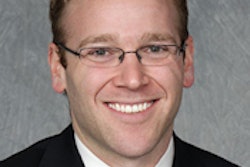Utilization rates and spending for medical imaging in the Medicare program have continued a steady downward trend that began in 2003, bucking widespread assumptions that both would continue to rise, according to a report published in the July issue of the Journal of the American College of Radiology.
The study from the Harvey L. Neiman Health Policy Institute concluded that the number of patient visits resulting in an imaging exam is trending consistently downward, from 12.8% in 2003 to 10.6% in 2011. Meanwhile, Medicare spending per enrollee for imaging declined from $418 in 2006 to $390 in 2011.
The Deficit Reduction Act (DRA) of 2005 has significantly reduced payments for the technical component of imaging services, wrote Martey Dodoo, PhD; Dr. Richard Duszak Jr.; and Danny Hughes, PhD. What's unclear is whether there has also been a decline in the utilization of imaging services during and after those doctor visits (JACR, July 2013, Vol. 10:7, pp. 507-512).
The researchers used Medicare Part B claims data from 2003 to 2011 to measure per-enrollee spending. They also used household component events data on the elderly Medicare-age population from the Medical Expenditure Panel Survey (MEPS) from 2003 to 2010 to measure utilization based on clinical encounters.
MEPS is an annual national survey of the U.S. noninstitutionalized population that collects data on healthcare use, healthcare spending, insurance coverage, and health status, along with demographic and socioeconomic data, the authors explained. The household component data are taken from questionnaires given to individual household members and their medical providers.
The results showed that annual health spending and Medicare payments for imaging grew from $294 per enrollee in 2003 to $418 in 2006, but then declined to $390 by 2011, the latest data available.
During this nine-year period, the percentage of annual medical visits that resulted in medical imaging in the Medicare population trended consistently downward, from 12.8% in 2003 to 10.6% in 2011.
Meanwhile, based on MEPS data, average per-patient spending on services by physicians for all medical visits by the elderly rose from about $3,631 in 2003 to $4,029 in 2007, the authors noted. Average expenses dropped in 2008 after implementation of the DRA but rose the following year to $5,001; they fell back to $4,388 in 2010.
Use of medical imaging, especially advanced techniques such as CT and MRI, grew dramatically in the early 2000s but has now receded, according to the study team.
"Our report confirms the observation made by others, that this growth trend has reversed," the authors wrote. "The significance of that reversal on concurrent and downstream patient care remains unknown but could have unfavorable implications for future patient care."



















